
Vernazza
The famed Cinque Terre is a UNESCO World Heritage site renowned for its picturesque landscapes, vibrant villages, and rugged trails. Peppered along the rugged coast of the Italian Riviera, the villages are connected by a beloved trail that winds its way through terraced vineyards, olive groves, and stunning seaside cliffs.
Known as the Blue Trail, this iconic hiking trail offers an unforgettable experience that marries breathtaking natural beauty with rich cultural heritage. This series of paths cater to all levels of hikers, from leisurely walks that offer panoramic views of the Ligurian Sea to more challenging routes that ascend the steep hillsides.
A brief overview: Cinque Terre comprises five distinct villages strewn in almost perfect harmony along the northwest Italian coastline. The entire area is a designated national park, so a park pass is required to hike some of the trails. This is easy to get and very affordable. Prices start at 7,50 Euro per day, and you can obtain the card online or at kiosks throughout Cinque Terre. Here is the official Cinque Terre Card website.
How Much Time to Spend in Cinque Terre
Most people hike the entire length in 1-3 days. But to savor it slowly, plan to spend a full 5 days in Cinque Terre, hiking it in sections for 3-4 of those days. The rest of the time is well spent indulging in the five distinct villages; enjoying the food, the rich history, and getting to know the locals. Each village has its own ambience and each can be fully explored within half a day. The exception to this would be Monterosso, the largest village, which deserves a full day if you have time.
Hiking Cinque Terre in Sections

Riomagiorre
Day 1: Riomagiorre to Manarola
The trek from Riomaggiore to Manarola, known as the Via dell’Amore, or “Path of Love,” is a testament to the romantic allure of Cinque Terre. It’s an easy trek suitable for all fitness levels; just under a kilometer. It is the perfect place for a romantic stroll with its breathtaking views of the Ligurian Sea.

Day 1: Riomagiorre to Manarola
The path is carved directly into the cliffsides and offers hikers an intimate experience with its rugged coastline framed by sparkling blue waters below and a horizon that stretches into infinity. Despite its short distance, the Via dell’Amore encapsulates the essence of Cinque Terre.
Lined with lush local flora, you’ll see wildflowers starting to bloom in April that linger through September, and olive trees, which add a fragrant layer to the experience. Hikers will also find various artworks and murals that pay homage to the trail’s romantic reputation, each piece telling stories of love and adoration that transcend language barriers.
On the day you hike to Manarola, be sure to languish in this gorgeous village for the rest of the day; it is one of the best places on Earth to catch the sunset. But if you must continue the hike, be sure to carve out time to come back when the sun dips below the water.
Alternative Trail from Riomagiorre Note: The trail from Riomaggiore to Maarola is often closed due to landslides. The alternative? A much more rigorous climb through vineyards over the hill to Manarola. The reward? Even more breathtaking views of the sea and Riomaggiore below. This alternative trail is clearly marked, so don’t worry, you won’t get lost.
As of this writing, the Via dell’Amore trail is closed until July 2024. You’ll find updates on all of the trails here.
Pro Tip: The official trail marker of Cinque Terre is a white and red stripe, and you’ll find this all along the trails at various points to keep you on track.

Manarola
Day 2: Manarola to Corniglia
The journey from Manarola to Corniglia, though more strenuous than the Via dell’Amore, rewards the adventurous spirit with its own unique set of vistas and experiences. As you wind your way through the heart of the Ligurian Coast’s rugged terrain, the trail climbs steeply out of Manarola through vineyards and citrus groves that perfume the air with the scent of the Mediterranean. It takes about an hour to hike this section without stopping.
The path itself is a mosaic of the region’s flora. In spring and summer, wildflowers in vibrant hues along with cacti dot the wayside, while the aromatic presence of rosemary and thyme fills the air year-round, a testament to the region’s rich botanical diversity. Interspersed among this natural beauty are remnants of old stone walls and occasional rustic structures, relics of the area’s agrarian past. The trail’s elevation provides a unique opportunity to gaze down upon the rooftops of Manarola; an inspiring view that blends seamlessly with the azure expanse of the Ligurian Sea.
Corniglia, unlike its sister villages, sits high atop a promontory about 100 meters (328 feet) above sea level, granting it a vantage point unlike any other in Cinque Terre. It is the only village in Cinque Terre that is not next to the sea, and it’s also the smallest. As you approach Corniglia, be prepared to tackle the “Lardarina”; 382 wide stone steps in switchback formation that signal the end of this stretch of the Blue Trail.

Corniglia
Day 3: Corniglia to Vernazza
The trek from Corniglia to Vernazza takes roughly 2 hours and continues the exhilarating exploration of Cinque Terre’s unique landscapes. Unlike the approach to Corniglia, this path begins with navigating through Corniglia’s quaint streets, gradually transitioning into narrow, verdant trails that promise yet another adventure. Just follow the white and red stripes.
The route itself is adorned with terraced vineyards that gracefully ascend the mountainside. If you’re lucky, you may even spot a worker driving a small car carrying crops along one of the metal tracks – a testament to the ingenuity of vineyard farmers who have worked these steep hillsides for untold generations. Along the way, the Mediterranean is your constant companion, its sparkling waters visible through the occasional clearing, reminding one of the delicate balance between land and sea that defines the Ligurian coast.
What makes this section particularly lovely is a true hidden gem: a bar and snack shop, almost hidden away in the hillside. This rustic oasis offers a welcome respite, especially on hot days, providing an opportunity to refuel and savor the local flavors. Run by a friendly local family, the bar serves a variety of refreshments, from freshly squeezed lemonade to robust Italian espresso to small bites, just in case you didn’t pack your lunch. You can even get a shot of vodka with your drink if you require a bit of liquid courage for the rest of the hike.
As the trail meanders from Corniglia towards Vernazza, hikers are treated to an array of sensory experiences that capture the essence of the Italian Riviera. Chirping birds create a delightful soundtrack, while glimpses of the sea expand into full panoramas at certain vantage points, offering spots for rest and reflection. Ancient stone walls and rustic farmhouses peek through the foliage, hinting at a time when these paths were tread by villagers instead of tourists.
Almost without warning, Vernazza emerges like a jewel among the cliffs. Its colorful buildings and the ancient Doria castle frame one of the most charming harbors in Italy. You’ll be rewarded with breathtaking views of the harbor, its boats bobbing gently on tranquil waters against the backdrop of brightly colored houses that seem to tumble down the cliffside. Be sure to sample the various shops full of handmade treasures and restaurants offering a taste of local Ligurian cuisine. This area of Italy is the birthplace of pesto, after all.

Vernazza
Day 4: Vernazza to Monterosso al Mare
The path from Vernazza to Monterosso is perhaps one of the most iconic segments of the Blue Trail, encapsulating the most dramatic beauty paired with the rugged beauty of the Ligurian coast. Monterosso is the oldest of the five villages, known for its beautiful beaches and historic architecture. This moderate trek takes about 1 ½ hours.
Yet, this trail can be demanding, featuring steep climbs and narrow paths among Italian scrub that wind through more lush olive groves and vineyards clinging to the steep slopes. Hikers are treated to scenic overlooks that provide perfect vantage points for photographs or simply pausing to soak in the infinite blue waters.
Once in Monterosso, take some time to enjoy Cinque Terre’s shining star of a beach, Fegina Beach. It is the only beach that offers full facilities and services such as chair and umbrella rentals. Most of the other beaches you’ll find throughout the five villages are not much more than glorified swimming holes with very little sand to speak of.
Throughout the Blue Trail, the sound of waves crashing against the rocks below is never far away as hikers navigate the steep and sometimes uneven path. En route, look out for ancient watchtowers and ruins speckling the landscape, whispering tales of a bygone era when these towers stood guard against pirates.
The Cinque Terre Card
You’ll need the Cinque Terre Card when you hike some sections of the Blue Trail. It is available in different versions to accommodate various interests and needs. The basic card grants access to numerous trails within the park, offering an eco-friendly way to explore the area’s natural and cultural landmarks.
For those looking to combine hiking with public transportation, there’s also a version of the card that includes unlimited access to the train service connecting the five villages of Cinque Terre. The train service is especially convenient for hikers, running frequently throughout the day with intervals every 15 – 40 minutes. You can hike any or all of the trail at your leisure, then if you get tired, simply catch the train from one of the villages.
Here is the official Cinque Terre Card website.
Best Time to Hike Cinque Terre National Park
Hiking Cinque Terre has become wildly popular over the last decade, so to get the most out of the experience, avoid the hottest and most crowded summer months. Weatherwise, the Riviera is very pleasant in the shoulder seasons of spring and autumn. You’ll encounter fewer people on the trail, affording more time to pause and take in the beauty without feeling rushed, and thus get a better experience overall. Peak times are generally late May through September.
Where to Stay in Cinque Terre
Monterosso and Riomagiorre are the two most popular home bases for hiking Cinque Terre, probably because they are at the north and south end of Cinque Terre, respectively. While there are a few small hotels, to get the authentic Italian experience, rent an apartment. You can easily do this via Vrbo, Airbnb, or any number of other vacation home outlets.
Many choose their home base in Riomagierre. The southernmost village is smaller and does not have as many accommodation options as Monterosso, but it harbors a sense of romanticism not quite felt in the other villages. In the evenings, the thing to do here is trek up the village’s steep cobblestone streets to get a better vantage point of the bustling Italian coastal life below.
How to Get to Cinque Terre
By far the most common way to get to Cinque Terre is by train, with the nearest major city being La Spezia, which serves as a gateway to the Cinque Terre region. From La Spezia’s central train station, frequent local trains run directly to the national park, stopping at each of the five picturesque villages. For a more picturesque mode of transport, take the ferry from La Spezia to Cinque Terre, which runs periodically throughout the day. Here is the ferry timetable and prices.
Alternatively, if you’re coming from cities like Florence, Milan, or Rome, direct or connecting trains can bring you to La Spezia, from where you can catch the local train or ferry to the park.
Note: Driving, while permitted, is not recommended in Cinque Terre. The only time it would make sense is if you already have a car and are coming from a different city. The narrow roads and extremely limited parking make having a car an inconvenience in this area. Trains are frequent and are usually on time, so it is best to take this mode of transportation.
For international travelers planning a trip to Cinque Terre, the closest and most convenient airports are Pisa International Airport (Aeroporto Internazionale Galileo Galilei) and Genoa Cristoforo Colombo Airport. Pisa is located approximately 80 kilometers from La Spezia and offers a wider range of European and some intercontinental flights, making it a popular choice for visitors coming from abroad.
From Pisa, you can take a train or shuttle service to La Spezia and continue the journey to Cinque Terre by local train or ferry. Genoa’s airport, positioned about 100 kilometers to the northwest of La Spezia, provides an alternative entry point, with flights mainly from European cities. Similar to Pisa, travelers can reach La Spezia via train or car from Genoa, enjoying scenic routes along the Italian Riviera.
Leave a Reply
Tags: article, cinque terre, italy

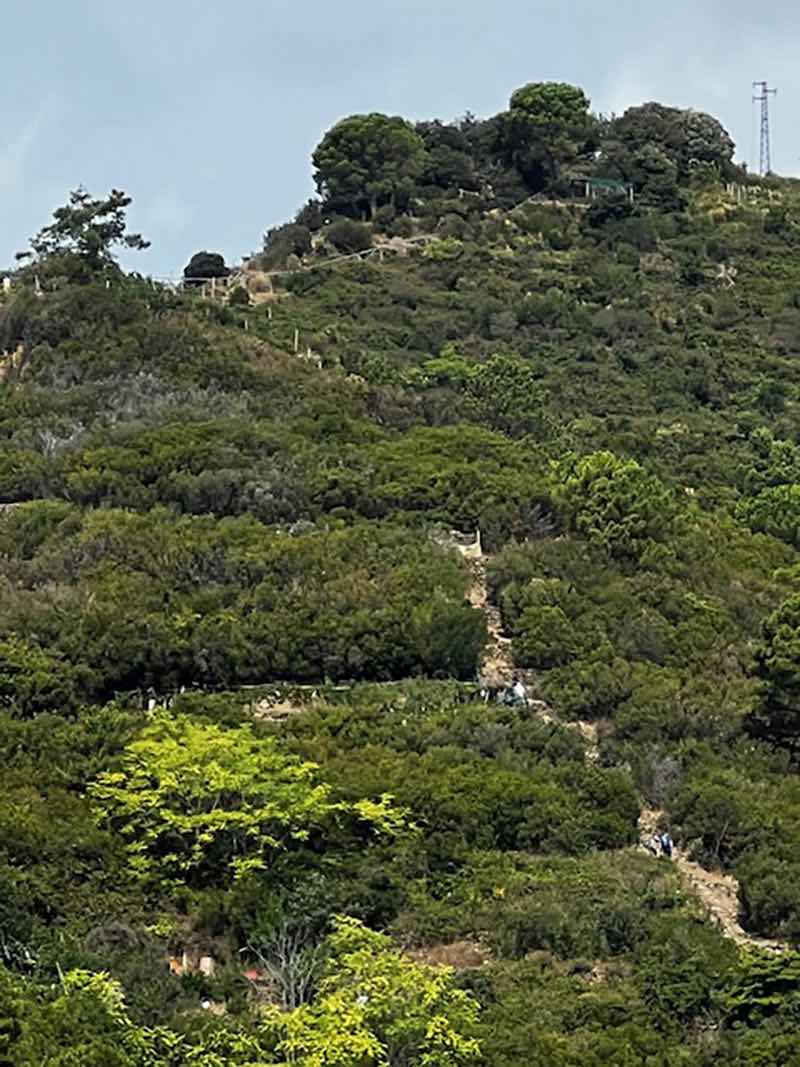


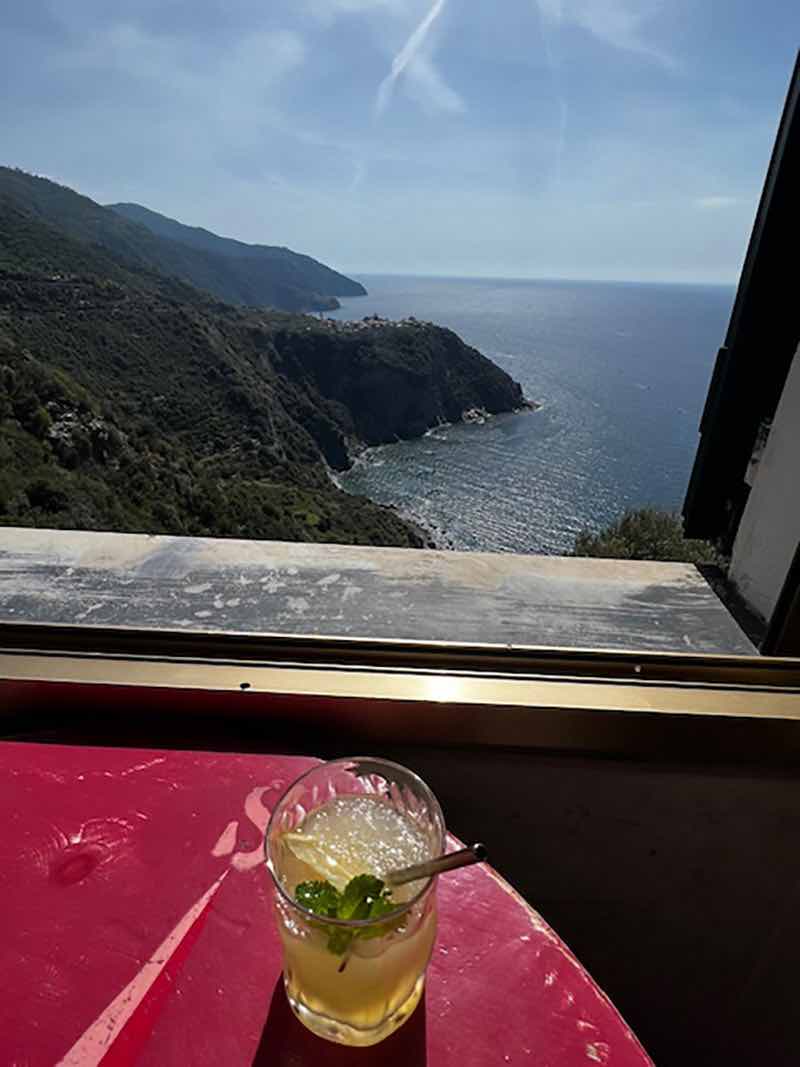

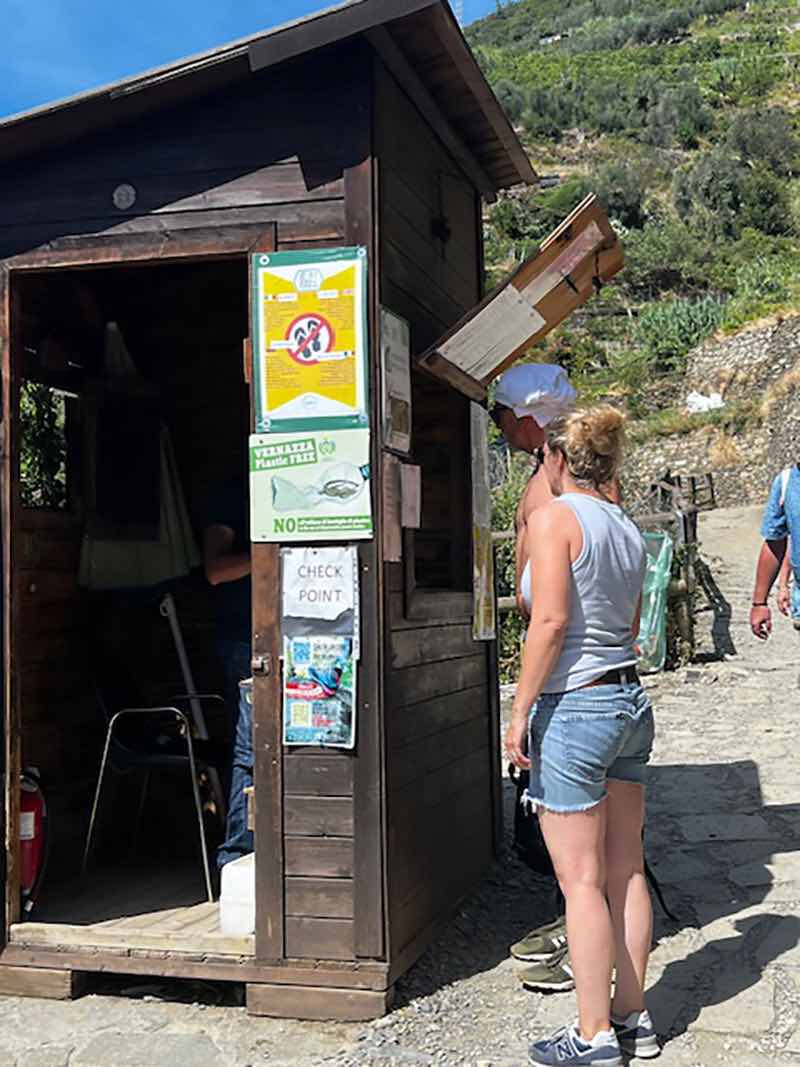


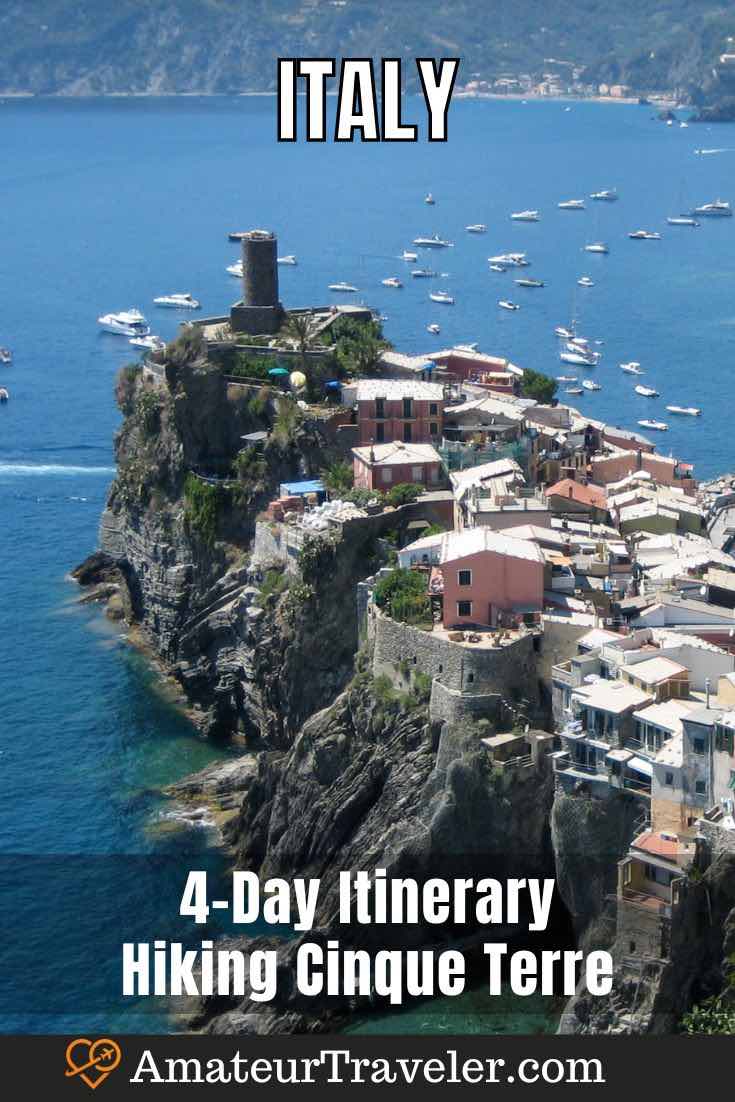
 Travel to the Cinque Terre, Italy – Video Episode 33
Travel to the Cinque Terre, Italy – Video Episode 33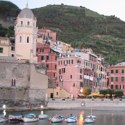 Travel to Italy – The Cinque Terre, Lake Como and Milan – Episode 102
Travel to Italy – The Cinque Terre, Lake Como and Milan – Episode 102 7 Places to Kiss in Italy
7 Places to Kiss in Italy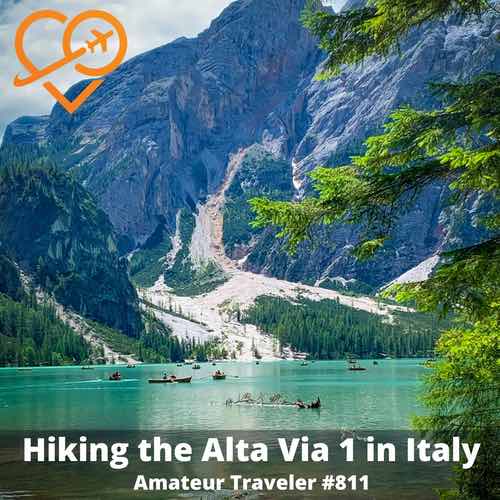 Hiking the Alta Via 1 in the Dolomites in Italy – Episode 811
Hiking the Alta Via 1 in the Dolomites in Italy – Episode 811
